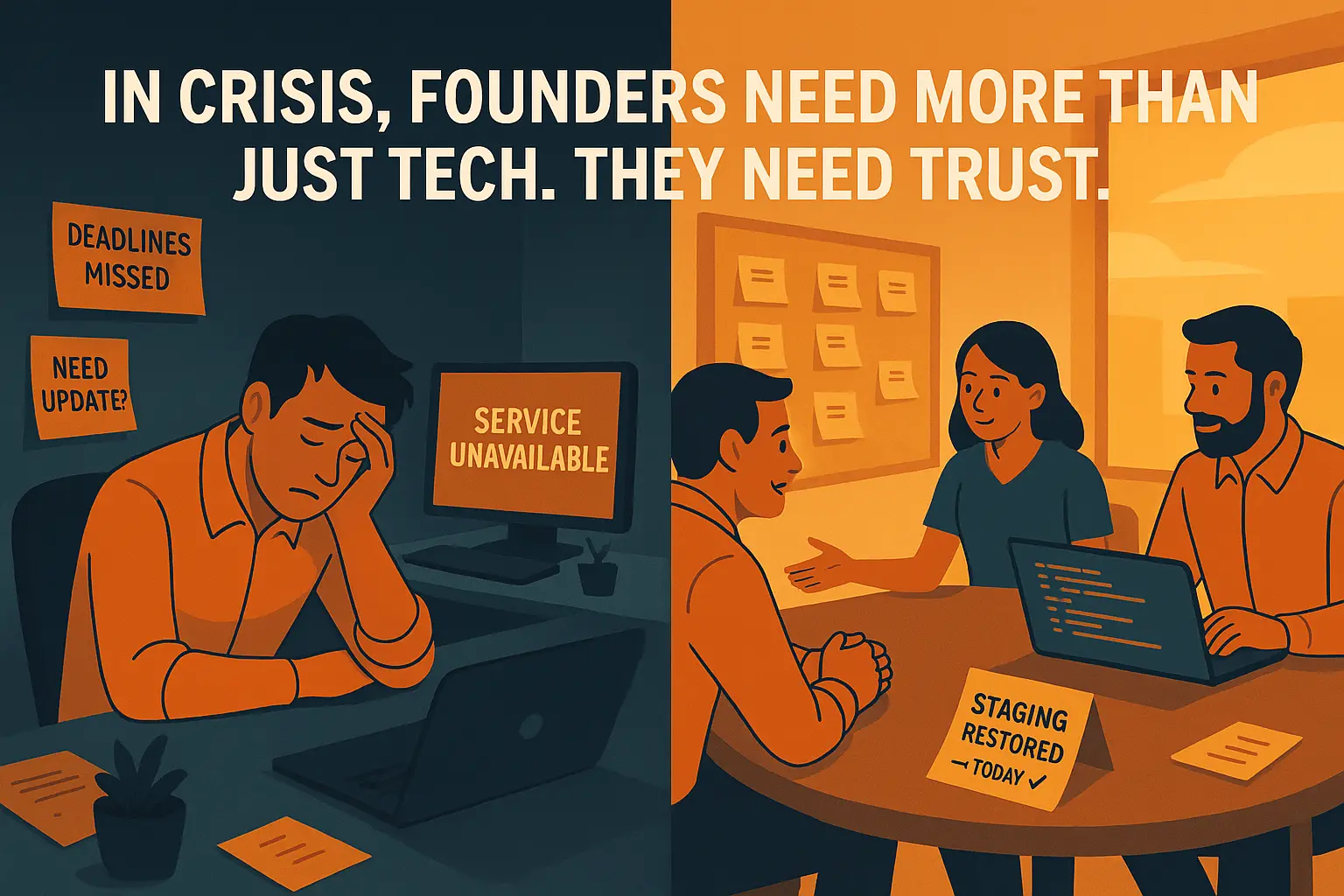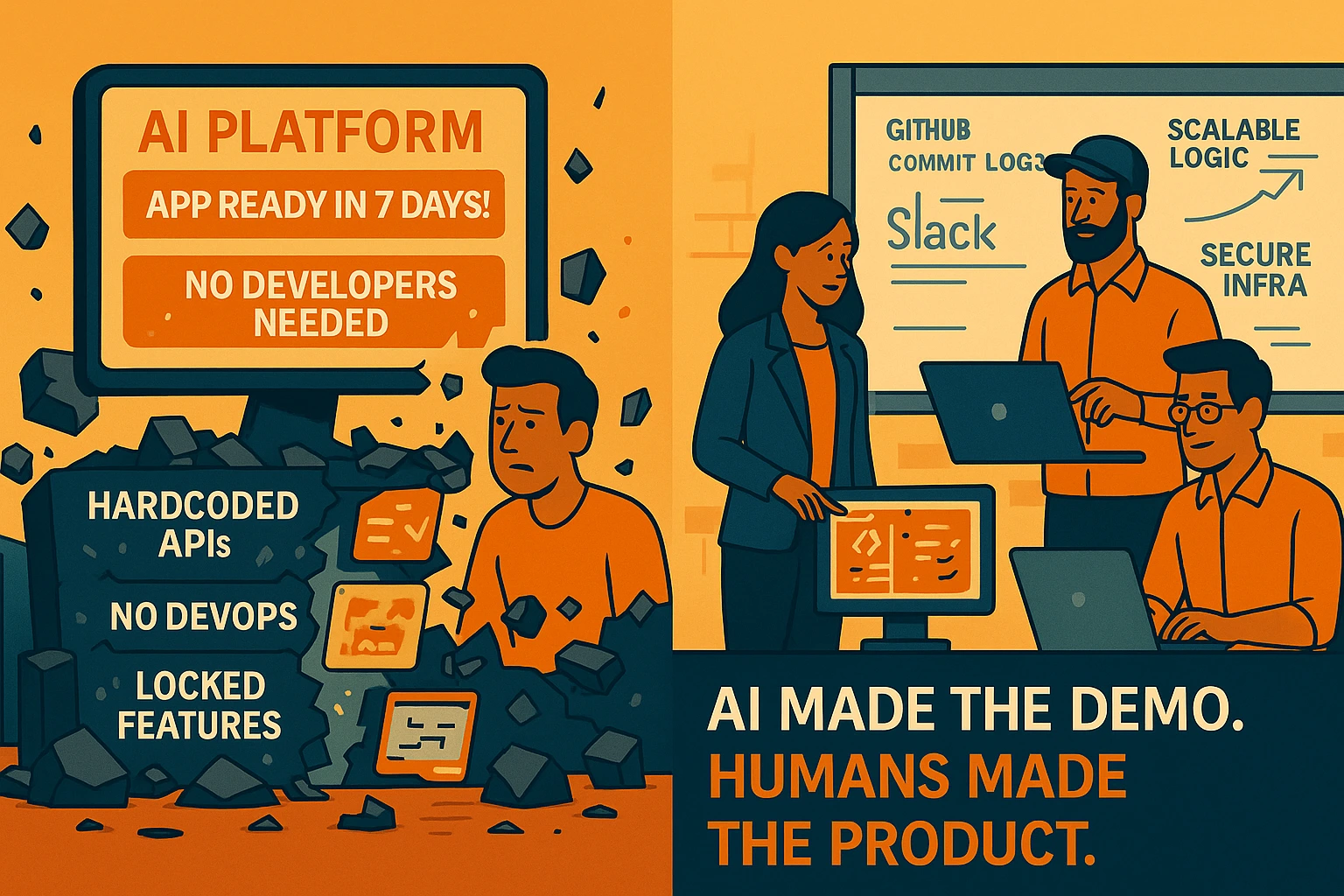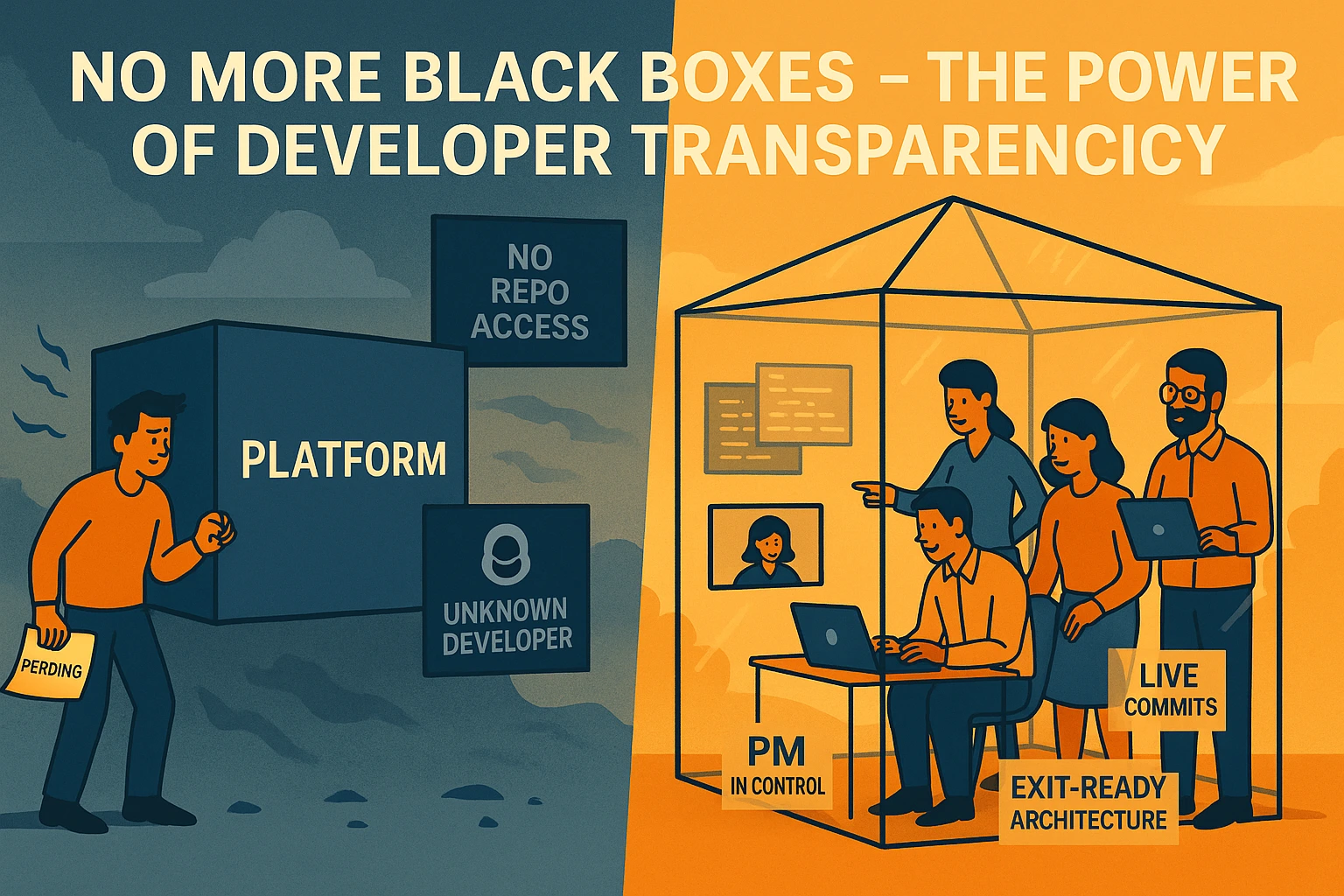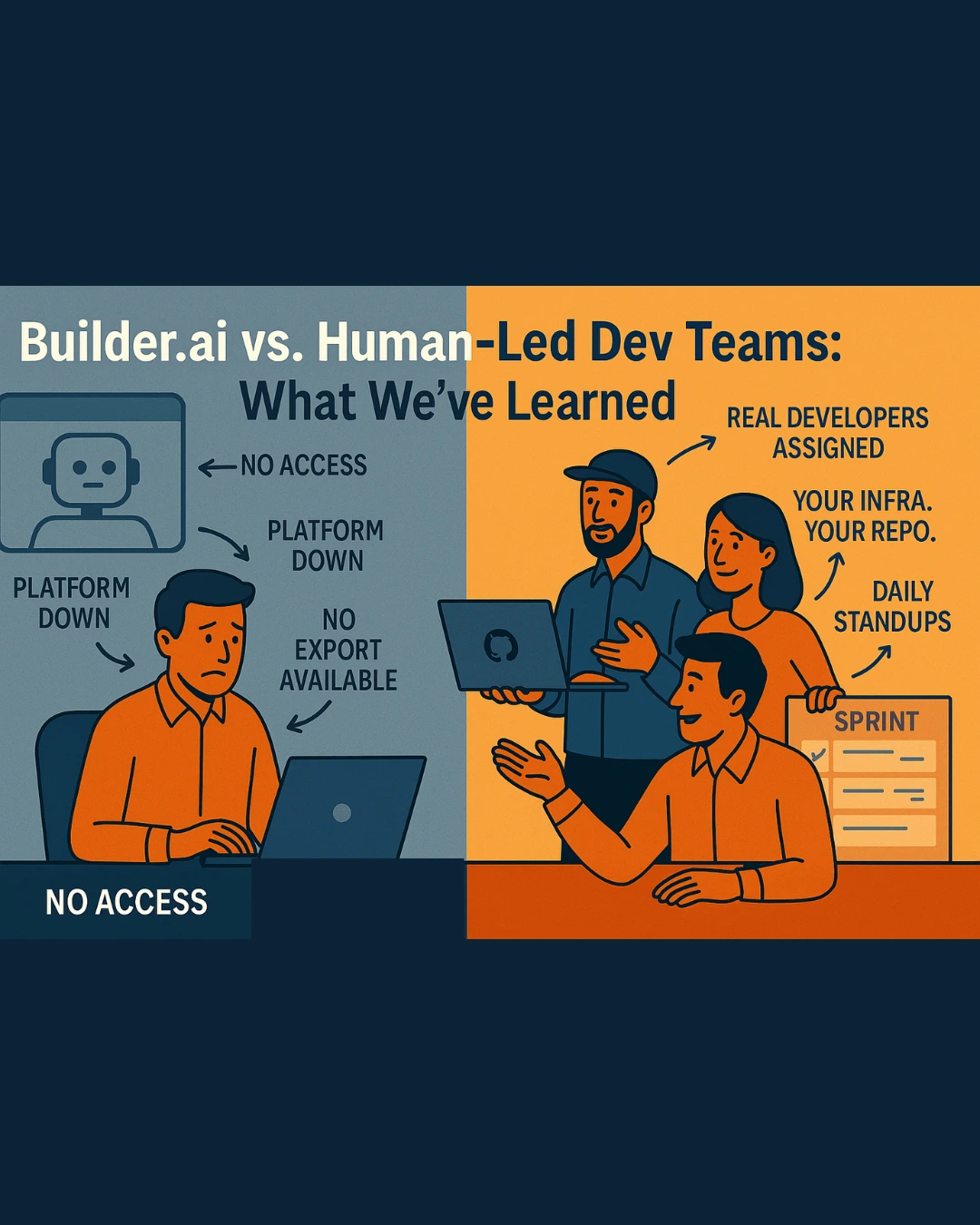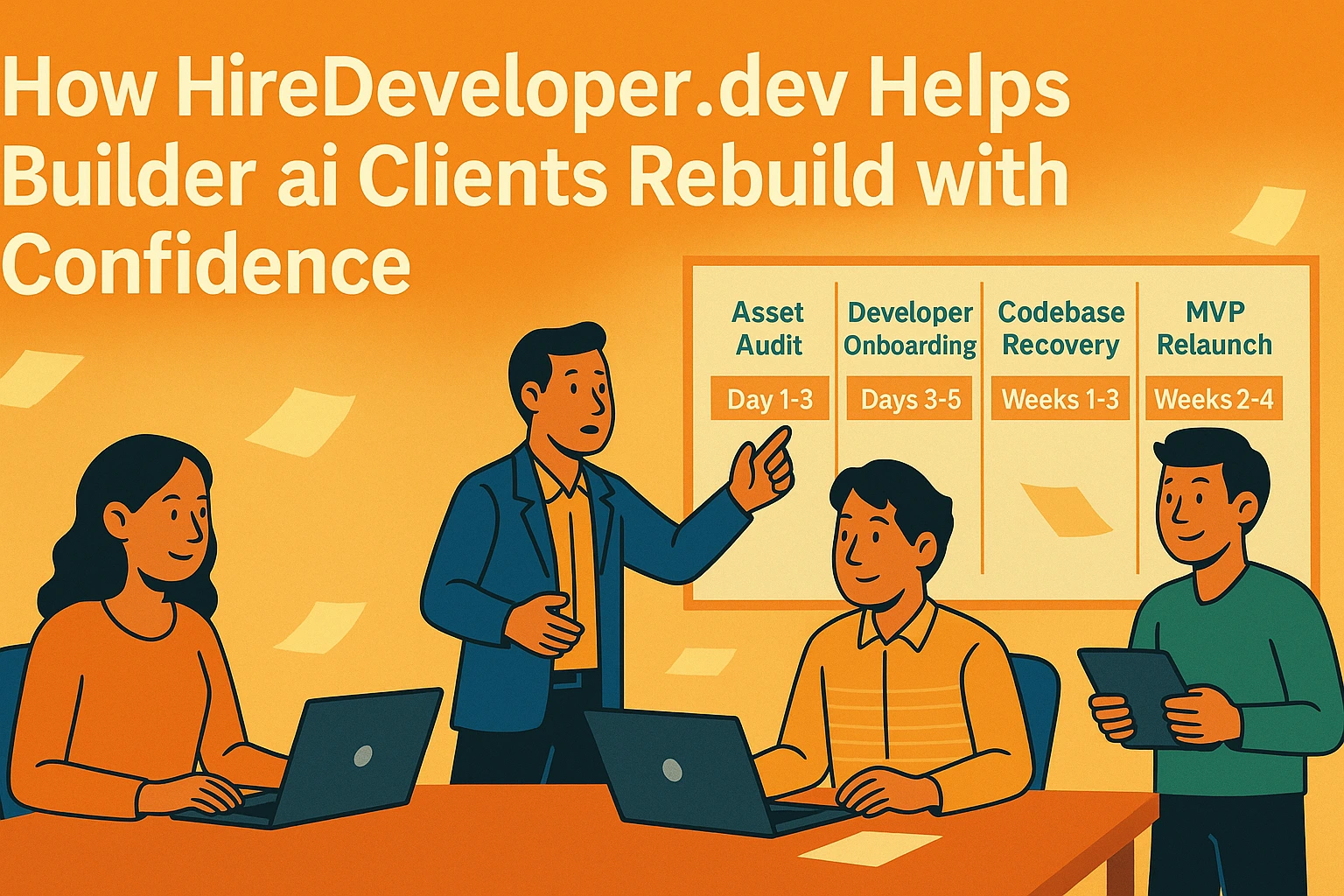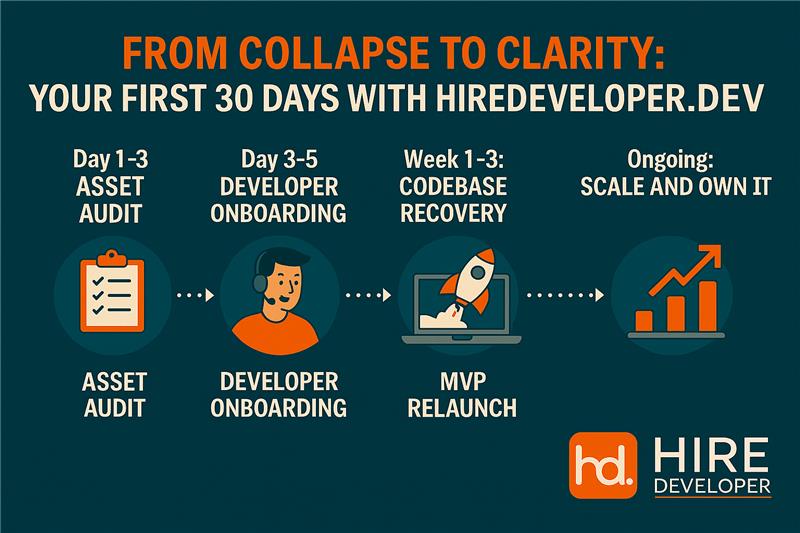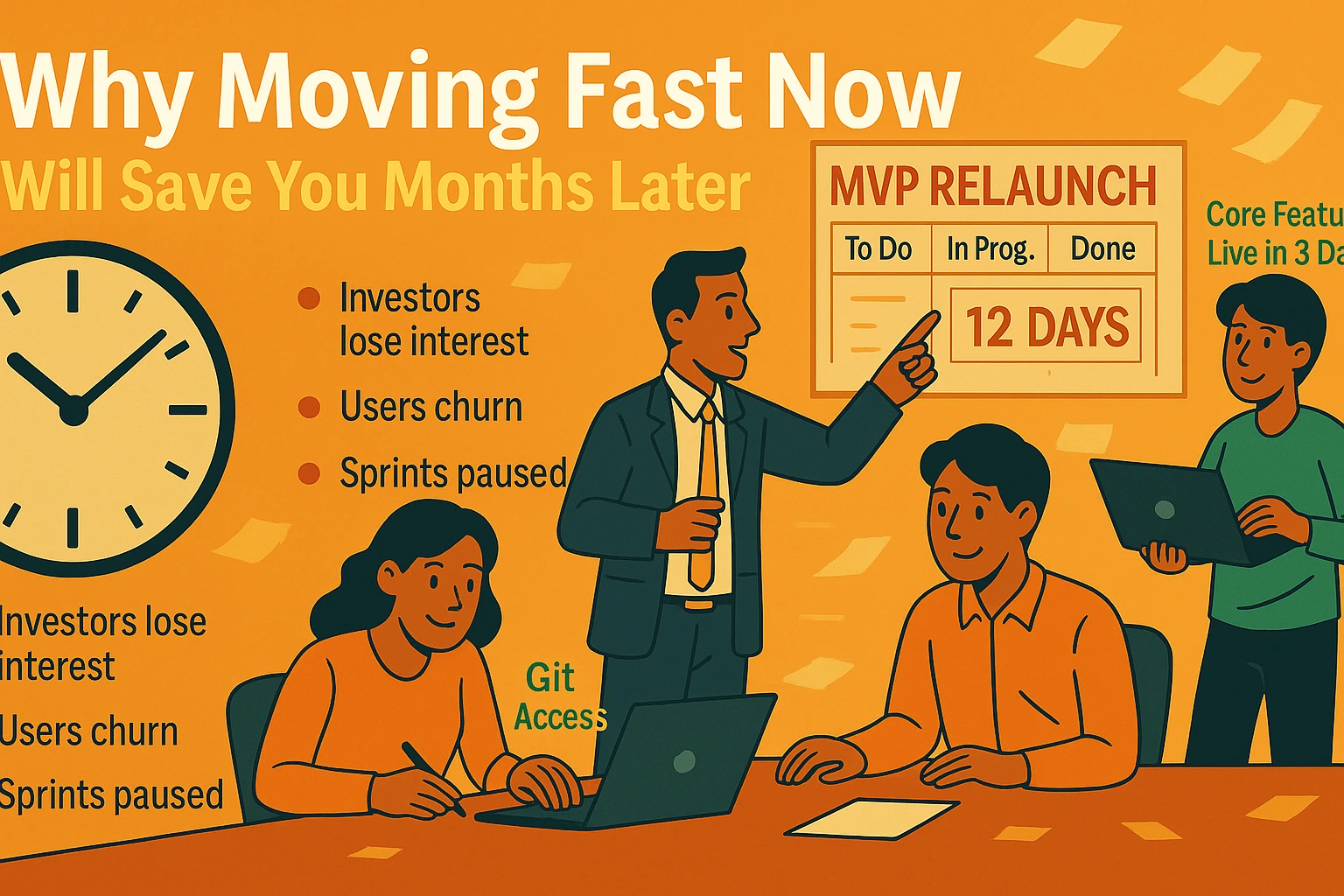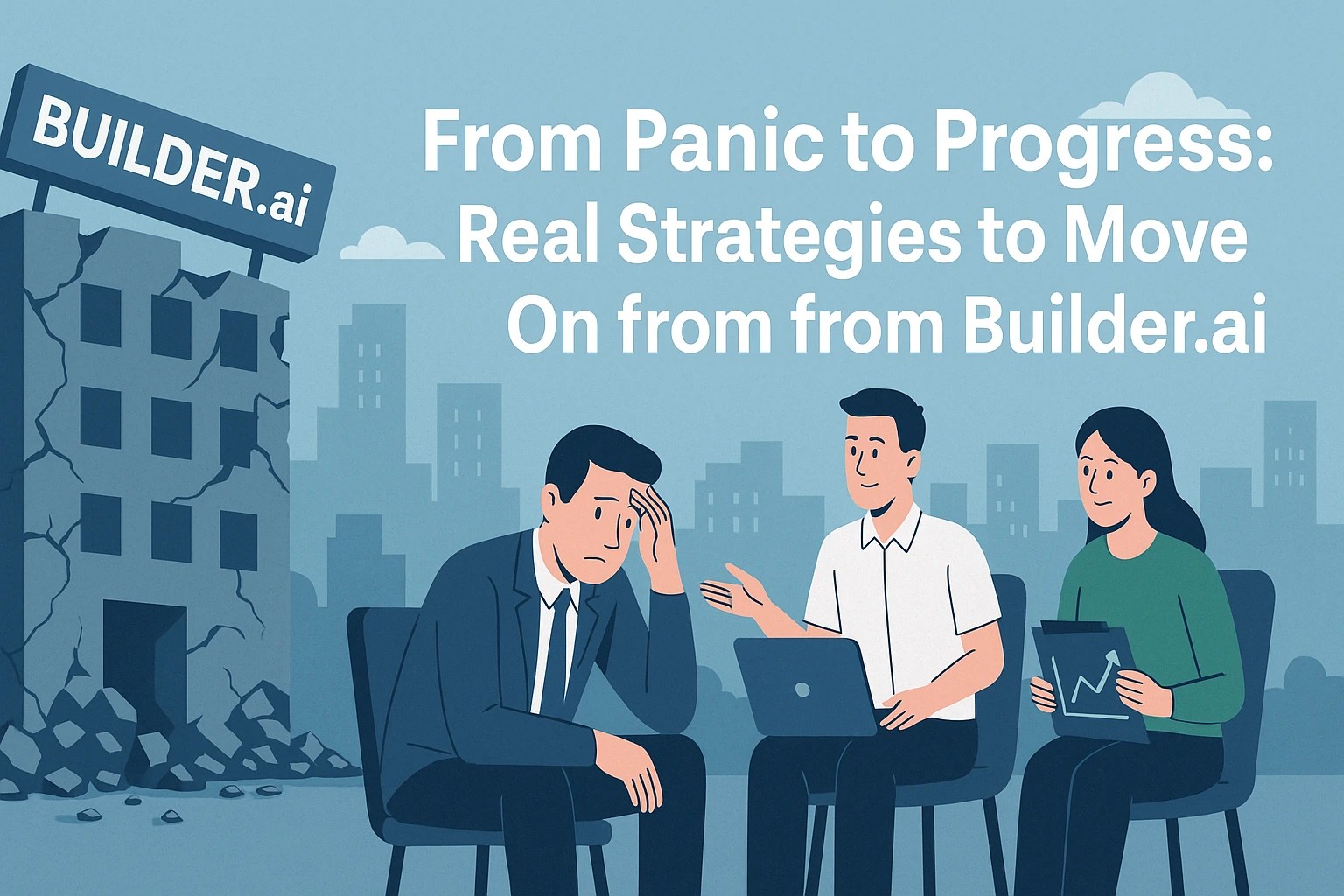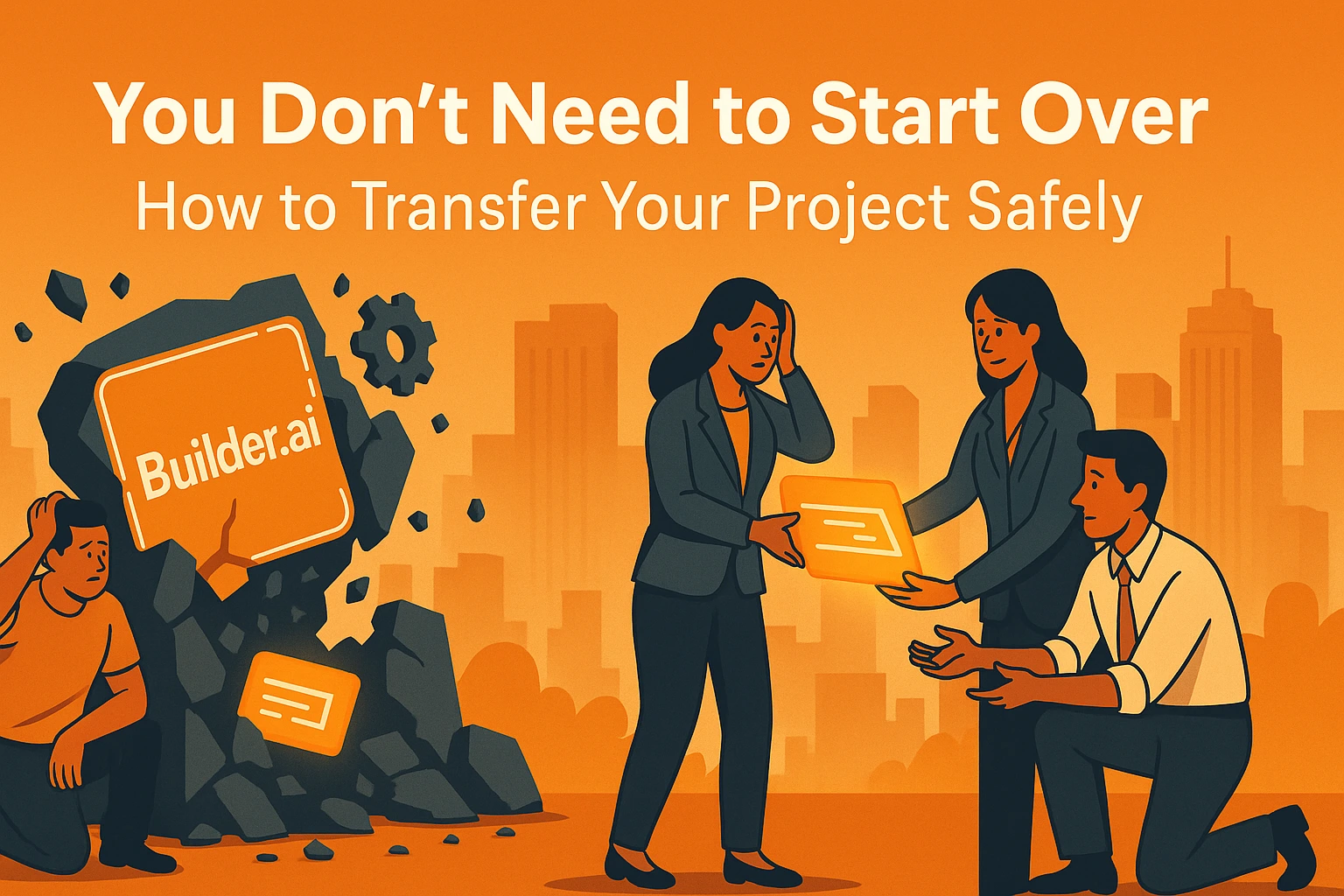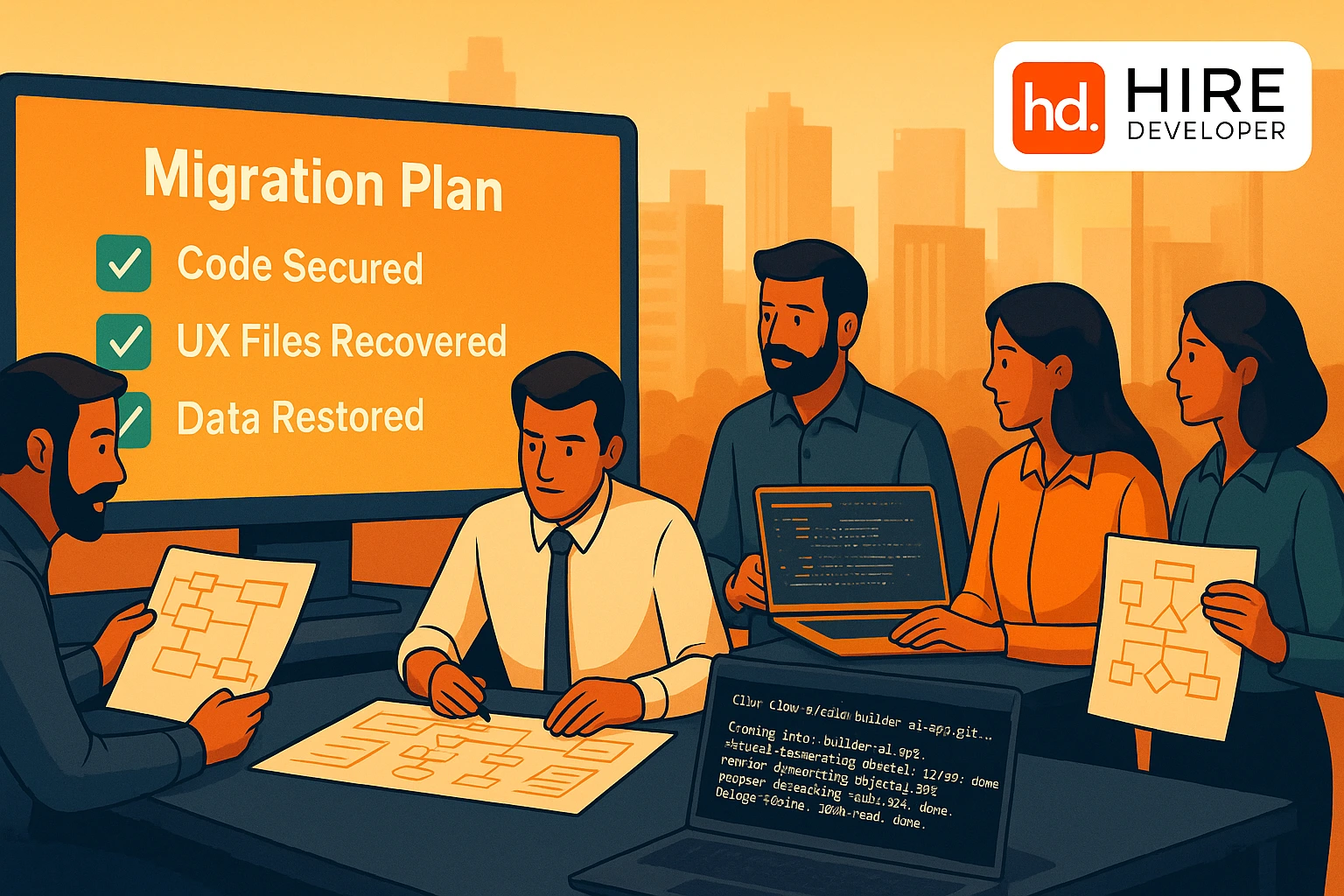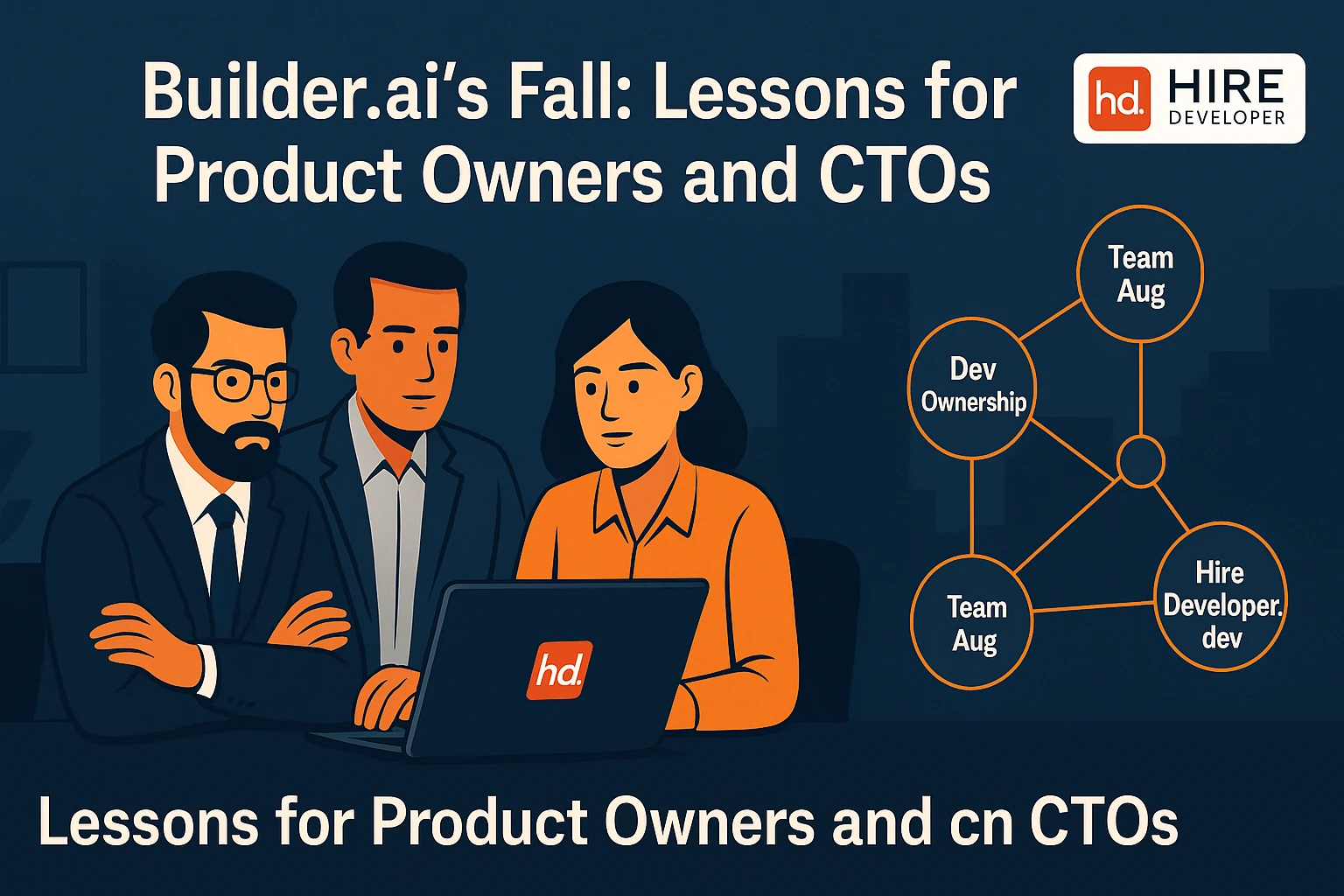“When Builder.ai went dark, teams didn’t just lose projects.”
They lost trust in their timelines, their vendors, and sometimes even in their own decisions.
For most founders, the hardest part wasn’t the code. It was the feeling that they had no idea who was behind it. No one to talk to. No one cared.
Because in a crisis, tech tools can’t lead. Only trust can.
The Emotional Cost of a Platform Collapse
We’ve spoken with dozens of Builder.ai clients. They all say some version of this:
- “We had no fallback.”
- “There was no one accountable.”
- “They promised AI. But they delivered isolation.”
This wasn’t a technical failure. It was a relationship void.
You don’t just need software delivery.
You need someone who shows up, follows through, and takes ownership.
What Trust Looks Like in Software Development
Trust isn’t a buzzword. It’s built into the process.
You trust a partner when:
- They tell you the truth, even when it’s uncomfortable.
- They respond when things go sideways.
- They show their work.
- They respect your roadmap like their own.
- They let you leave because they never trapped you.
Builder.ai’s model removed all of that.
The result? Confidence collapsed with the codebase.
Why Founders Are Now Choosing People Over Platforms
After a crisis like Builder.ai, founders aren’t just switching vendors, they’re rebuilding belief.
Here’s what they’re asking for now:
- Access over automation.
- Real conversations over dashboards.
- Dedicated people over anonymous systems.
- Structure over shortcuts.
The new buying question isn’t “Who’s fastest?”
It’s “Who will still be here when things get hard?”
The HireDeveloper.Dev Difference: Tech + Trust
Here’s how we rebuild trust where platforms broke it:
1. You meet your developers
No bots. No anonymous teams. You speak directly with the people writing your code.
2. You own your code and infrastructure
We don’t gatekeep anything. You always have access.
3. We report inside your workflow
Slack, Teams, Zoom, Trello, you decide. We integrate.
4. You lead the roadmap
We build what you prioritise, and we flag issues, not bury them.
5. You can scale or pause anytime
No contracts are designed to trap. Just deliver and earn trust every sprint.
What a Trust-First Client Experience Looks Like
A client came to us 2 days after Builder.ai’s collapse. They were in a funding round, and their product was frozen.
Within 48 hours:
- We onboarded 2 vetted developers.
- Restored their staging environment.
- Helped them demo a working version for the next investor call.
The founder’s words:
“It was the first time I could breathe in weeks. Not just because we were building again, but because I knew who was behind it.”
Crisis Creates Clarity
Here’s what we’ve learned (and what we hope you feel reading this):
- Founders don’t want hand-holding, they want truth.
- CTOs don’t need saving, they need alignment.
- Teams don’t crave speed, they crave stability.
You don’t need another promise. You need someone who builds with you, not for you.
That’s what we do. Every day.
Still Rebuilding Your Trust in Tech Partners? Let’s Talk.
HireDeveloper.Dev brings more than just technical skills, we bring commitment, transparency, and real people who care about your project’s success. Our developers integrate seamlessly into your workflow, adapt to your needs, and stay aligned with your business goals throughout the journey.
Book your free consultation call now at +91-8103094848 to get started. Talk to a delivery partner you can trust.
Related Resources:
- What Happened to Builder.ai? A Breakdown for Startup Founders
- How Builder.AI’s Collapse Shook the Startup World?
- How to React When Your Development Partner Fails Overnight?
- The 5 Stages of Vendor Grief and How to Get Unstuck
- Builder.ai’s Fall: Lessons for Product Owners and CTOs
- Builder.ai Migration Checklist: Save Your Code, Your Time, Your Product
- You Don’t Need to Start Over How to Transfer Your Project Safely
- From Panic to Progress, Real Strategies to Move on from Builder.ai
- Why Moving Fast Now After Builder.ai’s Collapse Will Save You Months Later
- How HireDeveloper.Dev Helps Builder.ai Clients Rebuild with Confidence
- Builder.ai vs. Human-Led Dev Teams: What We’ve Learned
- No More Black Boxes: The Power of Developer Transparency
- AI Was the Hype: Human Execution Is the Reality
- Why Owning Your Codebase Is Non-Negotiable in 2025
- Avoiding the Next Builder.ai: Red Flags Every Buyer Should Watch For
- From Locked to Liberated: How We Helped Former Builder.ai Clients Reclaim Control
- The Myth of One-Click Apps: Why Custom Always Wins in the Long Run
- What Every Investor Wants to Know: Technical Due Diligence After Builder.ai
- From Recovery to Resilience: A Blueprint for Building Post-Builder.ai
